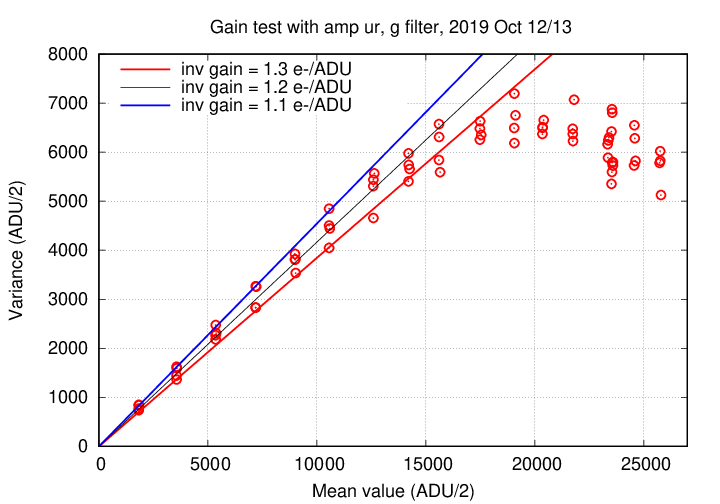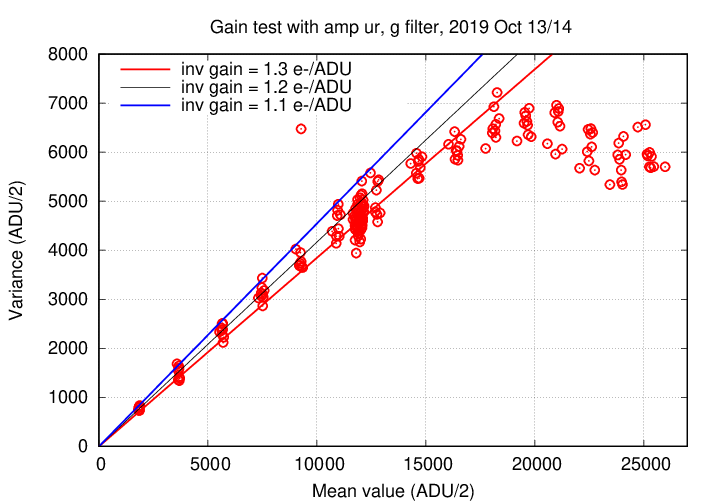
HDI returned to Hawaii for minor repairs and improvements during the summer of 2019. After it returned to Kitt Peak, Allyn Smith and his team made measurements from which one can compute the gain and linearity of the system.
On Oct 12/13, 2019, and Oct 13/14, 2019, Smith and his team took a series of dome flatfield images, varying exposure time in order to acquire images with a large range of light levels; the lamp was set at a fixed intensity of low, 80%. They used the default amplifier 'ur' in single-amp mode, and the g-band filter. The exposure times were
Oct. 12-13 (mjd 58768):
0079-0095 dflat-g linearity test
5,10,15,20,25,30,35,40,45,50,55,60,65,70,70,75,80
(Note two 70-sec exposures)
0096-0111 dflat-g linearity test
80,75,70,65,60,55,50,45,40,35,30,25,20,15,10,5
----------------------------------------
mjd 58769 (Oct. 13-14, 2019):
0254-0269 dflat-g linearity test
5,10,15,20,25,30,35,40,45,50,55,60,65,70,75,80
0270-0285 dflat-g linearity test
80,75,70,65,60,55,50,45,40,35,30,25,20,15,10,5
I made copies of this images and followed the procedures outlined in earlier measurements of gain
Below are the results of this set of exposures. First, for the Oct 12/13, 2019, dataset.

If one fits a line to the measurements with mean values between 0 and 24,000 ADU (= 12,000 ADU/2), one finds a formal result of
inverse gain = 1.20 +/- 0.07 e-/ADU
Next, for the Oct 13/14, 2019, dataset.

If one fits a line to the measurements with mean values between 0 and 24,000 ADU (= 12,000 ADU/2), one finds a formal result of
inverse gain = 1.29 +/- 0.08 e-/ADU
These measurements of gain are very similar to the values derived in tests in past years, which were about 1.3 e-/ADU.
These data also show that the chip's response to light starts to become non-linear at levels above 12,000 to 15,000 ADU/2, which correspond to 24,000 to 30,000 ADU. I recommend not exceeding 25,000 ADU per pixel for observations which are intended to yield high-precision photometry.